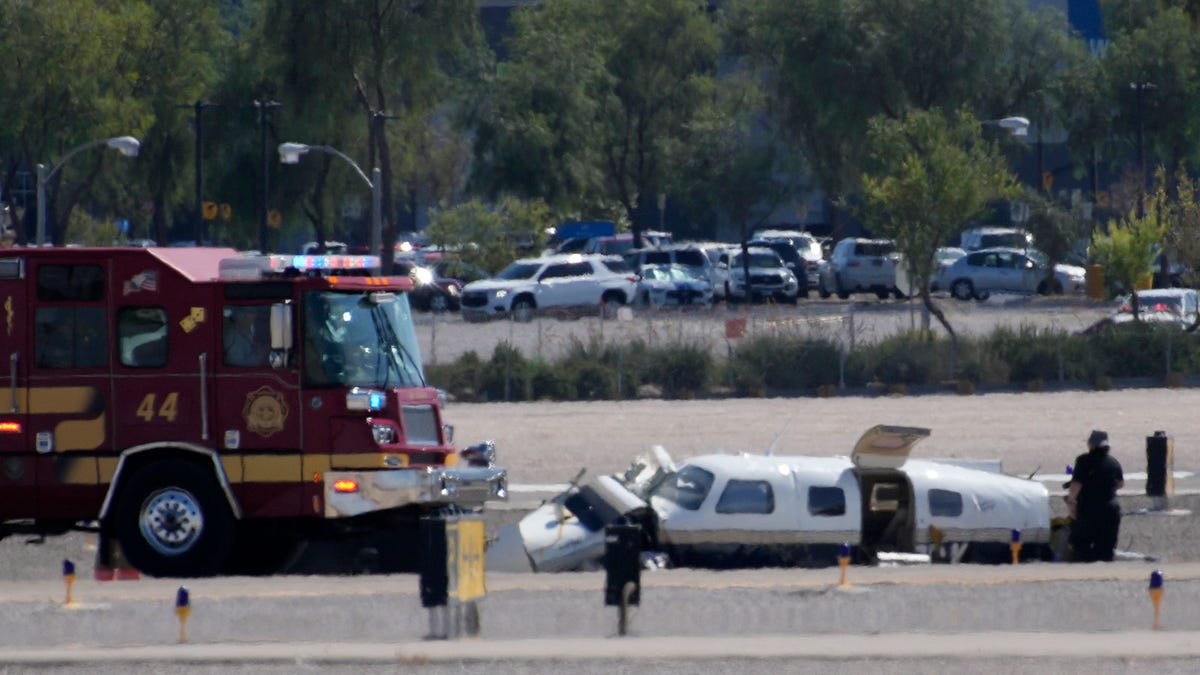Four Dead After Two Small Planes Collide Midair in Las Vegas

Photo: John Locher (AP)
Four people have died after two small passenger aircraft collided near North Las Vegas Airport. The crash, which occurred on Sunday afternoon, involved two single-engine planes, a Piper PA-46 and a Cessna 172.
According to the Wall Street Journal, the crash took place while one of the planes was attempting to land at North Las Vegas Airport. All passengers aboard both planes died in the incident, the Federal Aviation Administration has said.
In a statement, the FAA said:
Preliminary information indicates that the Piper PA-46 was preparing to land when it collided with the Cessna 172.
The Piper crashed into a field east of Runway 30-Right and the Cessna fell into a water retention pond.
Two people were aboard each aircraft.
The Associated Press added that the names, ages and hometowns of the four victims from the crash have not yet been released by authorities.
According to first responders from the Las Vegas fire department, an investigation into the cause of the collision is now underway. The FAA and the National Transportation Safety Board also added that they are investigating the cause of the crash.
G/O Media may get a commission
While the cause of the collision remains unknown at this time, the FAA reported that it occurred at 12:04pm on Sunday while both planes were in the airport’s traffic pattern. (A traffic pattern is like a virtual highway in the sky that leads towards an airport’s various runways.) Following the crash, the Clark County airport stayed open for air traffic. However, two out of its three runways remained closed into the evening to allow first responders and investigators to work on the scene.
Mid-air collisions between aircraft are extremely rare thanks to the air traffic avoidance tech fitted to most modern planes. However, while this technology is mandatory on larger planes, many small craft go without it, due to the complexity and expense of such systems. One of the worst mid-air crashes in history happened in 1978 when a Pacific Southwest Airlines jet collided with a small Cessna over San Diego, California.



